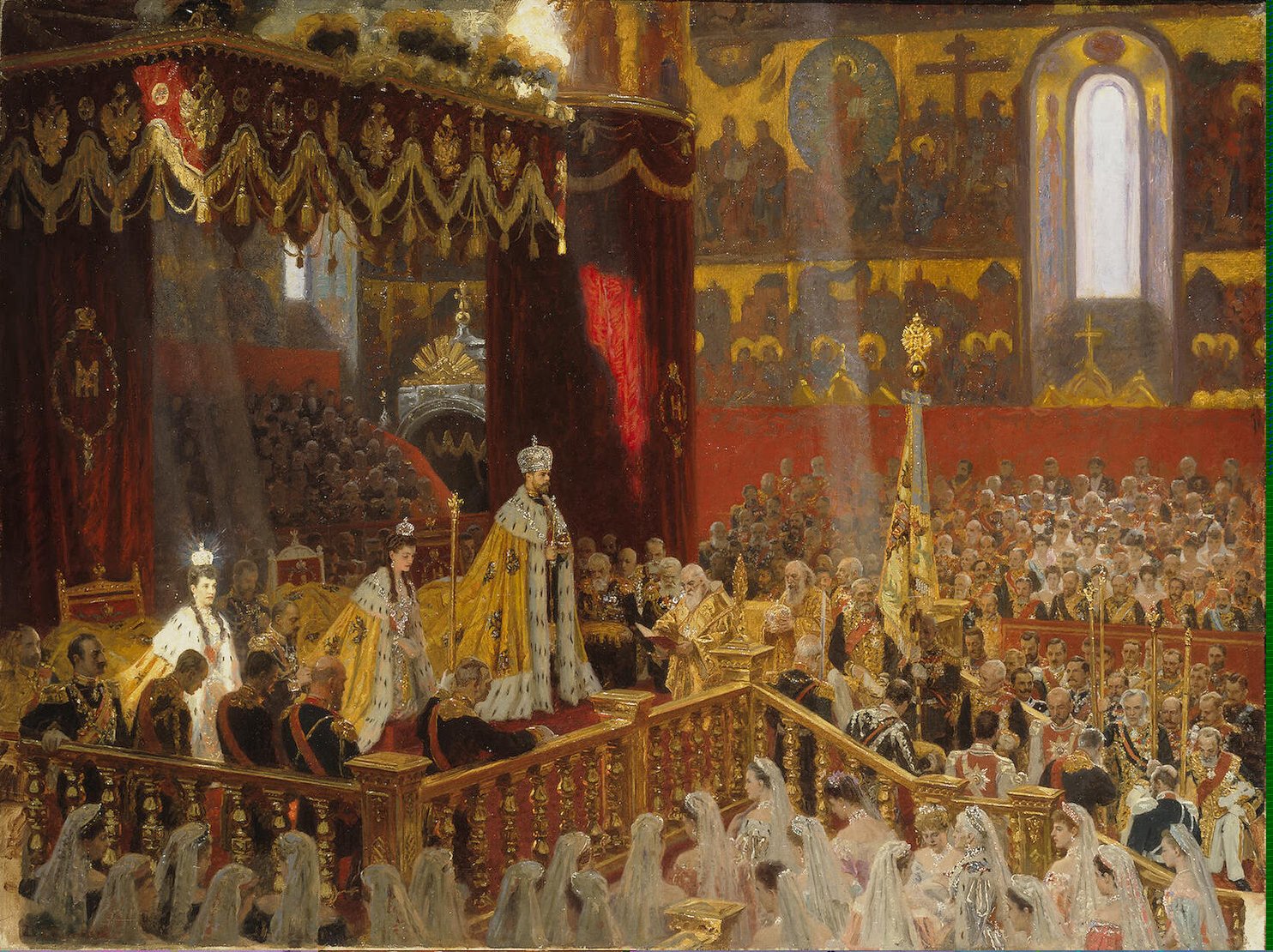
Coronation of the Russian monarch
The coronation of the emperor of Russia (generally referred to as the Tsar) from 1547 to 1917, was a highly developed religious ceremony in which they are crowned and invested with regalia, then anointed with chrism and formally blessed by the church to commence his reign. Although rulers of Muscovy had been crowned prior to the reign of Ivan III, their coronation rituals assumed overt Byzantine overtones as the result of the influence of Ivan's wife Sophia Paleologue, and the imperial ambitions of his grandson, Ivan the Terrible.[1] The modern coronation, introducing "Western European-style" elements, replaced the previous "crowning" ceremony and was first used for Catherine I in 1724.[2][3] Since tsarist Russia claimed to be the "Third Rome" and the replacement of Byzantium as the true Christian state,[4] the Russian rite was designed to link its rulers and prerogatives to those of the so-called "Second Rome" (Constantinople).[5]
While months or even years could pass between the initial accession of the sovereign and the performance of this ritual, church policy held that the monarch must be anointed and crowned according to the Orthodox rite to have a successful tenure.[6] As the church and state were essentially one in Imperial Russia, this service invested the Tsars with political legitimacy; however, this was not its only intent. It was equally perceived as conferring a genuine spiritual benefit that mystically wedded sovereign to subjects, bestowing divine authority upon the new ruler. As such, it was similar in purpose to other European coronation ceremonies from the medieval era.
Even when the imperial capital was located at St. Petersburg (1713–1728, 1732–1917), Russian coronations were always held in Moscow at the Cathedral of the Dormition in the Kremlin. The last coronation service in Russia was held on 26 May 1896 for Nicholas II and his wife Alexandra Feodorovna, who would be the final Tsar and Tsaritsa of Russia. The Russian Imperial regalia survived the subsequent Russian Revolution and the Communist period, and are currently on exhibit in a museum at the Kremlin Armoury.
Starting with the reign of Ivan IV, the ruler of Russia was known as "Tsar" rather than "Grand Prince"; "Tsar" being a Slavonic equivalent to the Latin term "Caesar". This continued until 1721, during the reign of Peter I, when the title was formally changed to Imperator (Emperor). Peter's decision reflected the difficulties other European monarchs had in deciding whether to recognize the Russian ruler as an emperor or a mere king, and reflected his insistence on being seen as the former.[7] However, the term "Tsar" remained the popular title for the Russian ruler despite the formal change of style, thus this article utilizes that term, rather than "Emperor".